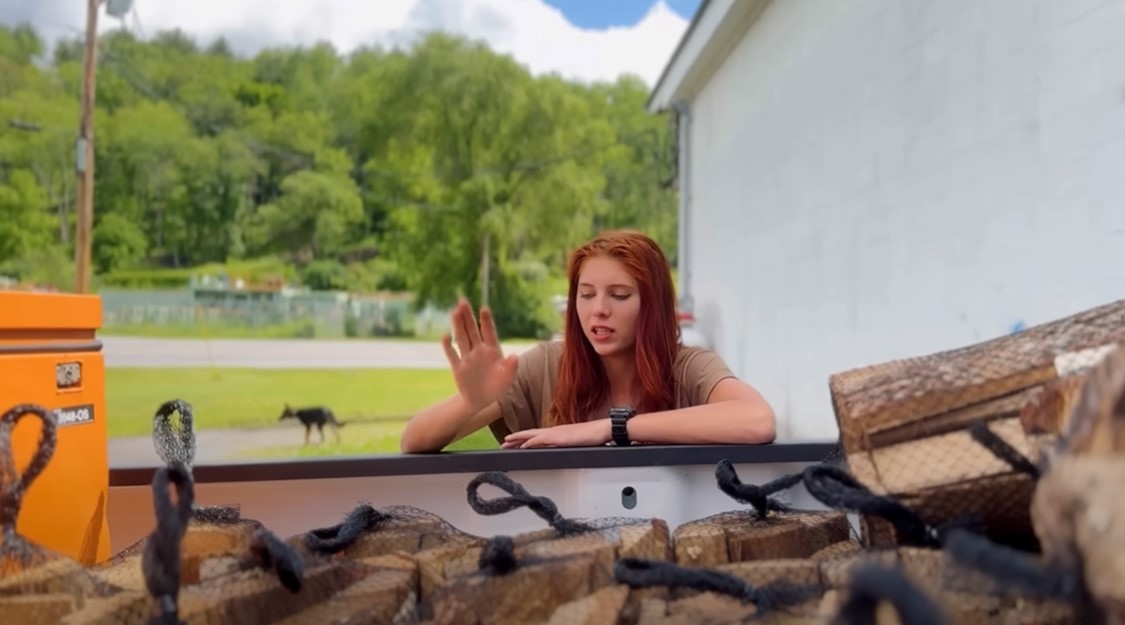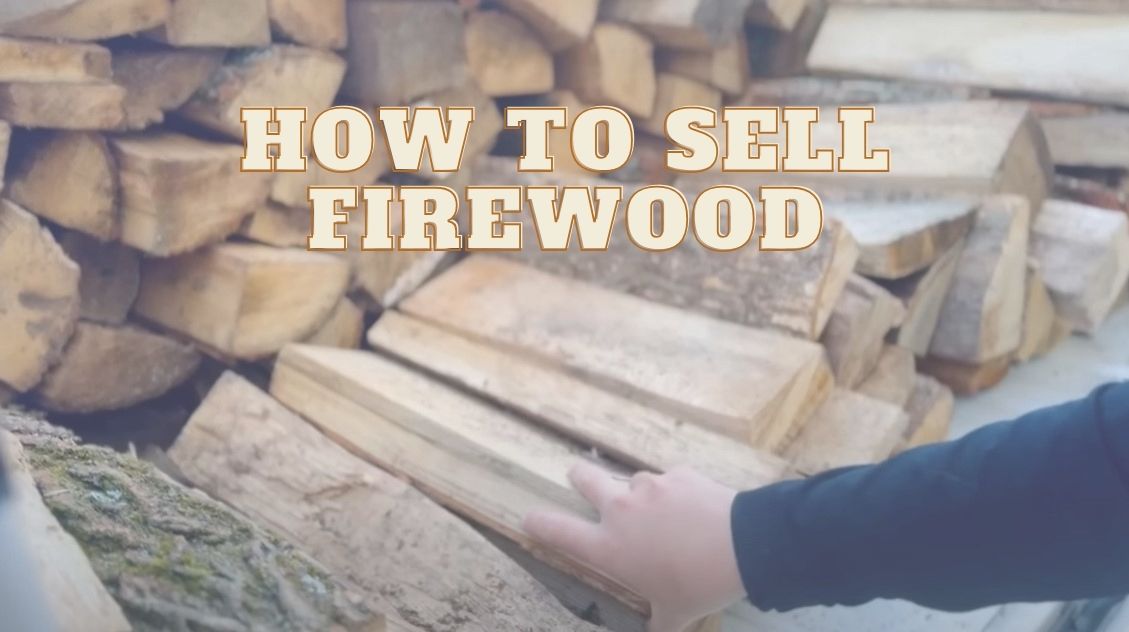Selling firewood can be a lucrative business for those with access to a steady supply of wood and the willingness to put in some hard work. Whether you have a property with an abundance of trees, or you’re looking to start a side hustle, selling firewood can provide a good income, especially in colder climates where the demand is high. In this comprehensive guide, we will delve into the various aspects of how to sell firewood, including pricing, packaging, legal considerations, and marketing strategies.
Techniques to sell firewood have evolved, and today, sellers have multiple avenues to reach their customers. From traditional roadside stands to online marketplaces, each method has its unique advantages. This guide will explore these methods in detail, providing you with the knowledge to make informed decisions and maximize your profits. By the end of this article, you’ll have a clear understanding of how to make money with firewood, the potential profitability of this business, and the necessary steps to get started. Can I sell firewood from my property? Do you need a permit to sell firewood? These are common questions we will address to ensure your business operates smoothly and legally.
Getting Started with Selling Firewood
Understanding the Market
Before diving into the business, it’s crucial to understand the market demand for firewood in your area. Conducting market research can help you identify potential customers and the best times to sell. Typically, firewood sales peak during the fall and winter months when people need wood for heating and recreational fires.
Types of Firewood
Different types of wood burn differently, and some are more desirable than others. Hardwoods like oak, maple, and hickory burn longer and hotter, making them preferred choices for many customers. Softwoods like pine burn faster and produce more creosote, which can build up in chimneys and cause fires.
Pricing Your Firewood
How much to sell firewood for depends on various factors, including the type of wood, the season, and your location. Research local prices and consider the following pricing strategies:
- Per Cord: A cord is a standard measurement of firewood, typically 128 cubic feet.
- By Weight: Selling firewood by weight can be more accurate but requires a reliable scale.
- By Bundle: Smaller quantities of firewood, often sold at convenience stores or gas stations.

Legal Considerations
Do you need a permit to sell firewood? This depends on your local regulations. In many areas, selling firewood requires a permit to ensure the wood is sourced sustainably and to prevent the spread of pests and diseases. Check with your local forestry department or city hall for specific requirements.
Sourcing Firewood
To sustain your business, you need a reliable source of firewood. This can come from your property, local tree services, or sawmills. Ensure that the wood is properly seasoned, which means it has been dried for at least six months to reduce moisture content and improve burning efficiency.
Preparing Firewood for Sale
Cutting and Splitting
Properly cut and split firewood burns more efficiently and is easier to handle. Invest in a good quality chainsaw and log splitter to streamline this process.
Seasoning the Wood
Seasoned wood is key to customer satisfaction. Stack your wood in a way that allows air to circulate, speeding up the drying process. Cover the wood to protect it from rain but allow the sides to remain open for airflow.
Packaging and Storage
How to sell firewood bundles effectively often depends on attractive and convenient packaging. Here are some tips:
- Bundles: Use sturdy, breathable bags or plastic wrap for easy transport.
- Bulk Sales: Offer discounts for larger quantities to attract customers who need more wood.
- Storage: Keep your firewood dry and off the ground to prevent rot and pest infestation.
Marketing and Selling Your Firewood
Identifying Your Target Market
Identify who is most likely to buy your firewood. This could include homeowners with fireplaces, campers, and small businesses like bed and breakfasts or rental cabins.
Sales Channels
Utilize various sales channels to reach your customers:
- Roadside Stands: A traditional and effective method, especially if you have a high-traffic location.
- Online Marketplaces: Websites like Craigslist, Facebook Marketplace, and local online forums can help you reach a broader audience.
- Local Businesses: Partner with local stores and gas stations to sell your firewood bundles.
Advertising Your Firewood
Use a mix of traditional and digital marketing strategies to promote your firewood business:
- Flyers and Posters: Distribute these in your local community to attract nearby customers.
- Social Media: Platforms like Facebook and Instagram can help you reach a larger audience and engage with potential customers.
- Website: Create a simple website with information about your products, prices, and contact details.
Read also: How To Sell Wood Slabs
Maximizing Profits
Adding Value
To increase your profits, consider adding value to your firewood. Offer services like stacking the wood at the customer’s location or selling kindling and fire starters.
Efficient Operations
Streamline your operations to reduce costs. Invest in efficient equipment, and consider hiring part-time help during peak seasons.
Customer Service
Providing excellent customer service can lead to repeat business and referrals. Ensure your wood is of high quality, deliver orders on time, and be responsive to customer inquiries.
Frequently Asked Questions
Do you need a permit to sell firewood?
In many areas, a permit is required to sell firewood to ensure that the wood is sourced sustainably and to prevent the spread of pests and diseases. Check with your local forestry department or city hall for specific requirements in your area.
How much to sell firewood for?
The price of firewood varies depending on the type of wood, the season, and your location. Common pricing methods include selling by the cord, by weight, or in bundles. Research local prices to determine a competitive rate.
Can I sell firewood from my property?
Yes, you can sell firewood from your property, provided you comply with local regulations regarding permits and sustainable sourcing. Ensure your wood is properly seasoned and stored to attract customers.
Is selling firewood profitable?
Selling firewood can be profitable, especially in areas with high demand during colder months. Profitability depends on factors such as your source of wood, operating costs, and pricing strategy.
How to sell firewood bundles?
To sell firewood bundles, package your wood in manageable sizes using sturdy, breathable bags or plastic wrap. These bundles can be sold at local stores, gas stations, or directly to customers through various sales channels.
How to make money with firewood?
You can make money with firewood by sourcing, cutting, splitting, seasoning, and selling it. Offering additional services like delivery and stacking, and selling related products like kindling and fire starters, can also increase your profits.
What is the best type of wood to sell?
Hardwoods like oak, maple, and hickory are preferred for firewood because they burn longer and hotter. Softwoods like pine are less desirable due to their faster burn rate and higher creosote production.
How should firewood be stored?
Firewood should be stored in a dry, well-ventilated area off the ground to prevent rot and pest infestation. Proper stacking allows air to circulate, speeding up the seasoning process.
How long does firewood need to season?
Firewood typically needs to season for at least six months to reduce moisture content and improve burning efficiency. Hardwoods may require up to a year to season fully.
Where can I sell firewood?
Firewood can be sold through various channels, including roadside stands, online marketplaces (like Craigslist and Facebook Marketplace), local stores, and direct sales to customers.
How do I measure firewood?
Firewood is commonly measured by the cord, which is 128 cubic feet of wood stacked. Smaller quantities can be measured by weight or in bundles.
What equipment do I need to start selling firewood?
Essential equipment includes a chainsaw, log splitter, and protective gear for cutting and splitting wood. Additional tools like a scale for weighing wood and packaging materials for bundles may also be needed.
How do I advertise my firewood business?
Advertise your firewood business through flyers, posters, social media platforms, and a dedicated website. Partnering with local stores and using online marketplaces can also help reach more customers.
What should I include in a firewood bundle?
A typical firewood bundle should contain 6-8 pieces of seasoned wood, packaged in a breathable bag or plastic wrap. Ensure the wood is cut to a consistent size for easy handling and burning.
How can I ensure customer satisfaction?
Ensure customer satisfaction by providing high-quality, seasoned firewood, delivering orders on time, and being responsive to customer inquiries. Offering additional services like stacking can also enhance the customer experience.
Visitor Comments
- John Smith: “I have been selling firewood for over a decade, and I must say it’s a rewarding business. The key to success is ensuring your firewood is well-seasoned and ready to burn. Customers appreciate high-quality wood that lights easily and burns efficiently. Additionally, offering delivery services has helped me reach a wider audience and increase my sales. The seasonal nature of the business requires good planning, but the profits during the winter months make it worthwhile.”
- Jane Doe: “Starting my firewood business from my property was one of the best decisions I made. Initially, it was just a way to make use of excess wood from tree maintenance, but it quickly grew into a steady income source. I learned that packaging is crucial – neatly bundled firewood sells much faster. Building relationships with local stores for reselling my firewood bundles also boosted my sales significantly. It’s important to stay informed about local regulations to ensure compliance and avoid any legal issues.”
- Michael Johnson: “As someone who’s been in the firewood business for five years, I can attest to the importance of understanding your market. I started by selling to friends and family, and eventually expanded to online sales. Pricing competitively while maintaining quality has been my strategy. Investing in good equipment like a reliable log splitter and chainsaw made the process more efficient. Also, using social media to advertise my business has brought in a lot of new customers.”
- Emily Davis: “Selling firewood has been a great supplementary income for our farm. We use fallen trees and pruned branches, ensuring nothing goes to waste. One thing I’ve learned is that customer service is key. Providing consistent quality and being responsive to customer needs builds a loyal customer base. During peak season, hiring a few extra hands to help with splitting and stacking wood has made a big difference. The business is hard work but seeing the satisfaction on our customers’ faces makes it all worthwhile.”
- David Williams: “I started selling firewood to fund my college education, and it turned into a small business. One of the biggest challenges I faced was ensuring the wood was properly seasoned, but once I mastered that, things improved drastically. Offering value-added services like kindling and fire starters helped increase my revenue. Participating in local markets and fairs also provided good exposure and helped me connect with the community. It’s a tough job but very rewarding.”
- Sarah Brown: “My experience with selling firewood has been quite positive. Living in a rural area, there’s always a need for firewood, especially in winter. I focus on providing high-quality hardwoods, which my customers prefer for their fireplaces and wood stoves. Networking with other local businesses and exchanging referrals has been beneficial. It’s essential to stay organized and keep track of your inventory to meet customer demand consistently. Overall, it’s a fulfilling business that keeps me connected to my community.”
In conclusion, selling firewood can be a profitable venture with the right approach. By understanding the market, ensuring legal compliance, sourcing and preparing high-quality wood, and utilizing effective marketing strategies, you can build a successful firewood business. Remember to focus on customer satisfaction and continually seek ways to improve and expand your offerings. With dedication and hard work, you can turn your firewood business into a thriving enterprise.

Leave a Reply